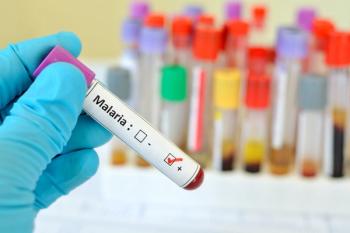
Research Underscores the Critical Role of Pharmacists in Managing Stiff Person Syndrome

Stiff Person Syndrome has unique complexities, necessitating the role of pharmacists in managing its symptoms and treatment options.
Introduction
Although its name may sound unusual, stiff person syndrome (SPS) is a serious, often overlooked, and under-researched clinical challenge that calls for greater awareness among pharmacists as frontline health care team members. SPS is a rare neurological disorder named after the most common symptom of SPS episodes: the muscles in the trunk and limbs locking up and becoming rigid. These symptoms can be intermittent and worsen over time. However, this disorder has many other symptoms, such as unsteady gait, double vision, and slurred speech.1
Currently,no treatment eradicates or cures SPS; however, medications and certain therapies have helped patients manage their symptoms and ultimately improve their quality of life. SPS is more common in women and develops in individuals aged 40 to 50, and rarely in children and older adults. SPS affects 2.11 per 100,000 individuals according to a 2024 population-based study conducted by Crane et al.2 This finding challenges the long-held belief that SPS occurs in only 1 to 2 cases per 1 million, which suggests the condition may be more common than previously recognized.Some risk factors for SPS include type 1 diabetes, autoimmune thyroid disease, vitiligo, pernicious anemia, and celiac disease.3
Pathophysiology and Symptoms
SPS affects the body in various ways. SPS is an autoimmune disease in which the body targets and disrupts gamma-amino butyric acid (GABA) neurons. These neurons are important inhibitory neurotransmitters in the brain. One of the key targets is the glutamic acid decarboxylase (GAD) enzyme, which is the enzyme that helps make GABA. GABA controls muscle movement, inhibiting nerve activity. In SPS, when GABA is disrupted, this leads to muscle rigidity, spasms, and heightened sensitivity to stimuli.4
There are different types of SPS based on clinical and physical presentation. There are multiple forms of SPS3:
- Classic SPS is the most common type that causes stiffness and spasms mainly in the trunk and limbs.
- Focal SPS can affect just 1 area, sometimes a single limb, and may stay limited for years.
- PERM is a rare, severe form with rapid onset, widespread muscle rigidity, and additional symptoms like involuntary jerks and sometimes autonomic problems.
- Paraneoplastic stiff syndrome is associated with malignancy and tends to progress more quickly, often requiring chemotherapy and/or radiation as well as immunotherapy.
- SPS with cerebellar ataxia combines classic SPS symptoms with problems in coordination and balance due to cerebellar involvement.
Clinical Evaluation and Challenges in Diagnosis
Because SPS is rare and has symptoms similar to other brain diseases, it is often misdiagnosed. The most common misdiagnoses include Parkinson disease, multiple sclerosis, and fibromyalgia. Diagnosing SPS usually involves a comprehensive neurological exam, which will evaluate muscle stiffness, spasms, and reflex abnormalities.5 Additional confirmatory tests are crucial because there is an overlap in clinical features with other diseases. A definitive diagnosis of SPS often involves serological testing for specific autoantibodies. GAD antibodies, more specific for the anti-GAD 65, are the hallmark of SPS diagnosis. Additionally, some patients may test positive for anti-amphiphilic antibodies, especially in paraneoplastic cases.5
To further support the diagnosis, physicians may use electromyography to evaluate electrical activity in muscles, which can reveal continuous motor unit firing at rest and abnormal patterns characteristic of SPS. Magnetic resonance imaging of the brain and spinal cord is also commonly performed to exclude structural or demyelinating diseases that could present similar symptoms.5
The complexity of SPS not only makes it difficult to diagnose, but it can also complicate the treatment plan. Treatment options often require trial, monitoring, and adjustment as needed. Typically, the different types of SPS require different treatment approaches, making therapeutic regimens personalized and tailored to the patient.5 Although there is no curative treatment, it can assist in reducing the severity of symptoms and improving quality of life.
Pharmacological Management
Because there is no cure for SPS, patient management typically starts by identifying the type of SPS and severity of the disease. The treatment of SPS focuses mainly on symptom management, such as myalgias, and reducing the immune system’s hyperactivity. Initial symptom management often includes a benzodiazepine,suchasdiazepam (Valium; Roche) or clonazepam (Klonopin; Roche), that can help relax the muscles.6 Benzodiazepines have GABA-enhancing properties that can target impaired inhibitory neurotransmitters, which are lacking in SPS. Diazepam is often prescribed as a first-line treatment for SPS; however, due to its risk of sedation, fatigue, and dependence, the starting dose is typically low and titrated slowly.6
Other therapies aimed at symptom control include muscle relaxants, such as baclofen (Gablofen; Piramal Critical Care), and neuropathic pain medications, such as gabapentin (Neurontin; Pfizer) or pregabalin (Lyrica; Pfizer).6 Baclofen is a GABA sub-B receptor agonist that activates spinal inhibitory pathways without relying on the endogenous GABA. Like benzodiazepines, it also has a gradual titration dose based on response and tolerability. Neuropathic medications, such as gabapentin and pregabalin, are not direct GABA agonists, but enhance GABAergic activity and are used to manage neuropathic pain. These medications are considered the first-line symptomatic treatment for SPS, depending on patient preference and patient-specific factors.6
Immunotherapy can also be used to manage symptoms that are not adequately controlled by the first-line therapies mentioned above. These medications include intravenous immunoglobulin (IVIG), plasma exchange, and immunosuppressantmedications, such as rituximab (Rituxan; Genentech, Biogen), mycophenolate mofetil (CellCept; Genentech), or azathioprine (Azasan; Alcami Corp).7 These medications can aid in slowing disease progression and reverse functional impairments.
IVIG is the most widely used and evidence-supported immunotherapy in SPS.7 IVIG has been proven in studies to significantly reduce muscle stiffness, improve gait, and reduce fall frequency.7 Rituximab is a monoclonal antibody that is considered second-line for patients not responsive to IVIG. Mycophenolate mofetil and azathioprine are occasionally used but have not significantly demonstrated effectiveness. Plasmapheresis is used in acute exacerbations as an adjunct to maintenance therapy in patients who experience frequent spasms and are not responsive to the traditional treatment approach. However, it is not recommended for long-term treatment.7
Non-Pharmacological Therapies
Some non-pharmacological approaches to managing SPS can include physical therapy, aquatic therapy, heating pads, stretching, massages, yoga, chiropractic treatment, and transcutaneous electrical nerve stimulation. To optimize the patient’s treatment, a combination of pharmacologic and nonpharmacologic therapy can improve symptom control, improve mobility, and reduce muscle rigidity.6
For patients who are on multiple therapies for the management of SPS, pharmacists play a key role in conducting thorough medication reviews, monitoring potential drug-drug interactions, and simplifying complex regimens. Pharmacists are also essential in ensuring the proper infusion protocols, pre-medications to reduce infusion reactions, ongoing monitoring of immunoglobulin levels, and mitigating infection risk.8
Monitoring and Follow-Up
Pharmacists are essential in the monitoring and follow-up of SPS therapy. Pharmacists assist the medical team in monitoring the patient’s response to the medications and disease progression, monitoring labs, and adjusting medications based on findings. Polypharmacy is also a concern in patients with complex neurological conditions such as SPS. The expanded role of pharmacists can be instrumental in reducing these risks associated with polypharmacy by conducting routine medication reviews and having consistent follow-ups to ensure the patient is educated on medication administration and adverse effects.8
Patient Counseling and Education
Patient education is critical in chronic disease management, especially for rare diseases like SPS. Pharmacists are in a vital position to help optimize therapy outcomes through patient education.8 For a patient who has been diagnosed with SPS, consistent medication adherence is essential for controlling the frequency and severity of SPS symptoms.8 Many patients rely on long-term treatment with agents such as benzodiazepines, baclofen, corticosteroids, IVIG, and/or immunosuppressants. Each of these medications is associated with unique administration techniques, monitoring, and adverse effects.8 Many of these adverse effects can interfere with the quality of life and contribute to nonadherence if not adequately addressed.
When counseling patients with SPS, pharmacists should first explain how the medications work to reduce muscle rigidity and prevent symptom flare-ups in patient-friendly language. As the pharmacist, it is essential to highlight the risks of abruptly stopping therapy, and to address forgetfulness or fear of side effects, which are common adherence barriers.8 Pharmacists can work with patients to address adherence, including recommending a medication organizer, alarm-based smartphone applications, or text reminders.9 Collaboration with caregivers is also essential to reinforce the importance of consistent dosing schedules.9 Pharmacists should ask about adverse effects during provider visits or when picking up medication refills. Adverse drug reactions should be documented using proper reporting systems when necessary.3
Beyond medications, patients benefit from lifestyle changes and emotional support. SPS symptoms may worsen under physical or emotional stress, so patients should be encouraged to avoid triggers such as loud noise, bright lights, cold environments, or high-stress situations. Patients with SPS should be aware of fall prevention strategies, especially those patients with severe stiffness or balance issues.3
Collaborative Care and Pharmacist Involvement
Pharmacists’ expertise in medication management, monitoring, and providing patient education makes them essential in enhancing the quality of life and ensuring optimal medication therapy for patients living with SPS.8 Pharmacists are considered one of the most accessible health care professionals and a consistent point of contact for patients with questions or concerns between provider office visits. Pharmacists can typically serve as a communication bridge between the physician and the patient. They are vital in promoting medication adherence and managing adverse effects, which can lead to improved patient outcomes. Pharmacists work closely with neurologists, immunologists, nurses, and other health care professionals to ensure patient care plans are safe and personalized, adjusting medications based on response and tolerability, leading to more patient-centered and tailored care.8 Pharmacists can also monitor immunotherapy infusions,ensuring proper administration. The constant communication between the provider and the pharmacist strengthens the treatment decisions made for the patient, leading to positive treatment outcomes.8
Patient Advocacy
Pharmacists should stay up to date with the new developments and advancements in treatmentfor SPS, as emerging therapies and research can potentially change the landscape and outcome of the disease.8 Pharmacists play a valuable role in managing rare diseases by helping to ensure access to high-cost and specialized medications.8 Many of these medications require close monitoring, specialized handling, and unique requirements for administration, such as infusion centers.8 Pharmacists’ contributions extend beyond dispensing to include patient counseling, monitoring adverse drug reactions, and guiding therapeutic decisions, ultimately improving clinical outcomes and cost-efficiency in rare disease care.8 Pharmacists also play a crucial role in access to medications for patients who might need payment assistance with assistance programs, communicating with insurers, or working with pharmaceutical companies to ensure that treatment is not delayed due to these barriers.8
Conclusion
SPS may be rare, but the pharmacist’s role in managing this condition is vital. From supporting patients with their medications to helping them understand side effects and make lifestyle changes, pharmacists are one of the most consistent and accessible health care team members.8 SPS is a unique condition and doesn’t look the same for every patient, which makes personalized care essential. Pharmacists are in a great position to help tailor treatment plans, monitor therapy, and adjust recommendations based on what works best for each patient. Whether it’s simplifying a medication schedule, catching a potential drug interaction, or being there to answer a patient’s questions, the pharmacist’s role can directly impact outcomes and quality of life.8
As treatments for SPS continue to develop, staying informed and engaged is key.8 By building strong relationships with patients diagnosed with SPS and being actively involved in their care, pharmacists can help reduce the burden of this condition and improve patients’ daily lives.
REFERENCES
Stiff Person Syndrome. Johns Hopkins Medicine. Accessed August 14, 2025.
https://www.hopkinsmedicine.org/health/conditions-and-diseases/stiff-person-syndrome-sps Crane PD, Sillau S, Dreher R, et al. Population-based study of the epidemiology of stiff person syndrome in a large Colorado-based health system. Neurology. 2024;103(12):e210078. doi:10.1212/WNL.0000000000210078
Stiff-Person Syndrome. National Institute of Neurological Disorders and Stroke. Updated April 7, 2025. Accessed August 14, 2025.
https://www.ninds.nih.gov/health-information/disorders/stiff-person-syndrome Stiff Person Syndrome. American Brain Foundation. Accessed August 14, 2025.
https://www.americanbrainfoundation.org/diseases/stiff-person-syndrome/ Hadavi S, Noyce AJ, Leslie RD, Giovannoni G. Stiff person syndrome. Pract Neurol. 2011;11(5):272-282. doi:10.1136/practneurol-2011-000071
Stiff Person Syndrome. Cleveland Clinic. Updated June 10, 2024. Accessed August 14, 2025.
https://my.clevelandclinic.org/health/diseases/6076-stiff-person-syndrome Dalakas MC, Fujii M, Li M, Lutfi B, Kyhos J, McElroy B. High-dose intravenous immune globulin for stiff-person syndrome. N Engl J Med. 2001;345(26):1870-1876. doi:10.1056/NEJMoa01167
Cunico C, Leite SN. Role of pharmacists in the context of rare diseases: a scoping review protocol. BMJ Open. 2023;13(11):e072001. doi:10.1136/bmjopen-2023-072001
Viswanathan M, Golin CE, Jones CD, et al. Interventions to improve adherence to self-administered medications for chronic diseases in the United States: a systematic review. Ann Intern Med. 2012;157(11):785-795. doi:10.7326/0003-4819-157-11-201212040-00538
Newsletter
Stay informed on drug updates, treatment guidelines, and pharmacy practice trends—subscribe to Pharmacy Times for weekly clinical insights.




